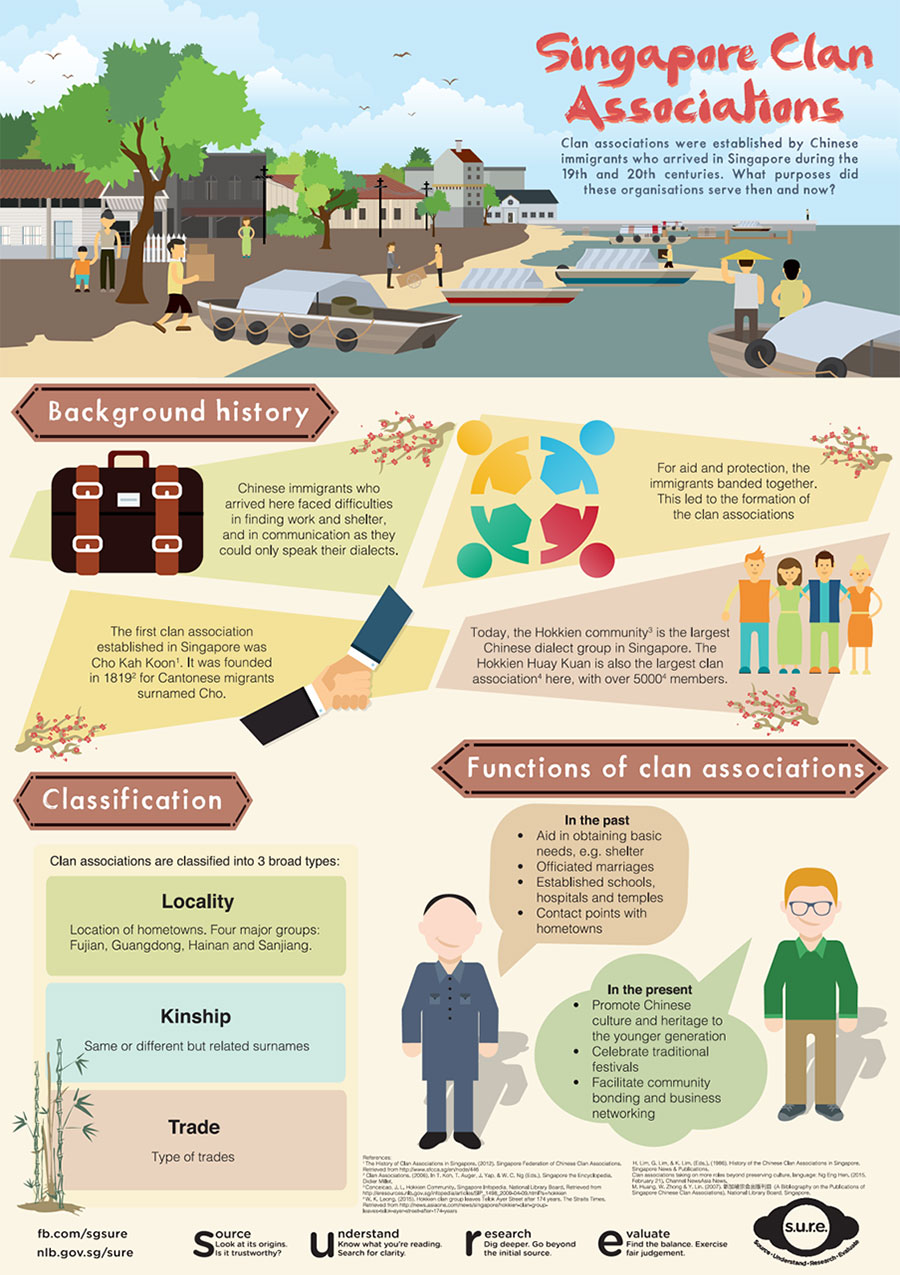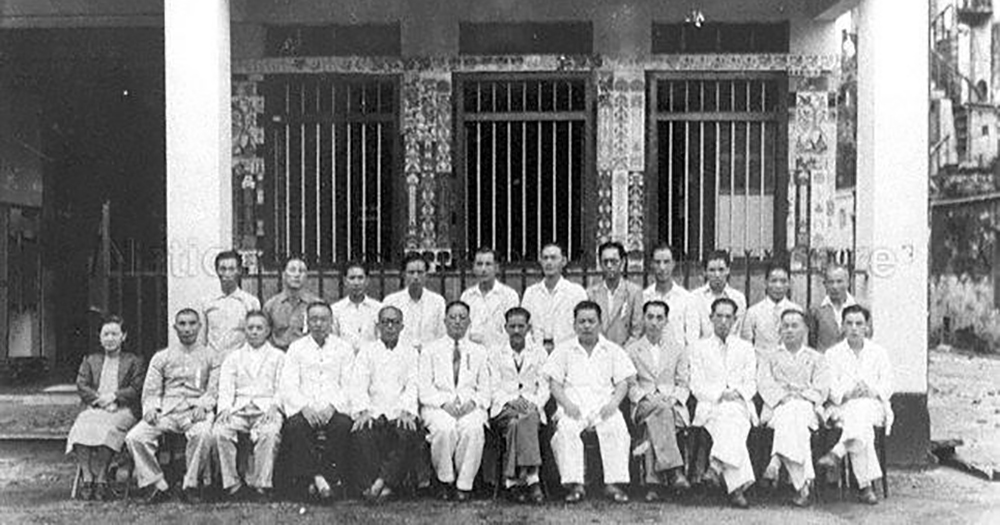When Chinese immigrants arrived in Singapore in the 19th century, they were pretty much left to their own devices.
Their only source of support were the immigrant or clan associations that helped newcomers settle in and make Singapore their home.
Clan associations a connection to home
Immigrant associations in the past primarily served as a connection to home countries for immigrants.
While many were based on dialect groups, others welcomed immigrants with the same clan name or same trade.
Chinese clan associations dominated the scene because of the sheer number of Chinese immigrants who arrived in Singapore from the 19th century.
Most of these immigrants hailed from Southern China, such as Fujian and Guangdong, and these associations became their virtual "village" away from home.
The first known Chinese clan association in Singapore was the Cho Kah Koon, founded in 1819 for Cantonese immigrants with the surname "Cho".
Clan associations support group
Clan associations were formed for very practical reasons.
Chinese immigrants needed to perform their customary duties -- from ancestral worship, cultural festivals, deity worship, to death rituals -- all of which would not have been possible for a poor immigrant with only the shirt on his back.
These clan associations were also largely exclusive and only admitted those from the same dialect group or bearing the same family name.
Being a member of this exclusive club had its benefits, such as employment opportunities.
In the Oral History Interview on Chinese Dialect Groups via the National Archives of Singapore, Dr Low Cheng Gin, said:
"In those days, most of the coffee shops were run by Hainanese people. Why? They had a very very good "kong si" (clan association). This club would help members improve their trade, expand their business, and that was a very, very good thing."
Dialect groups linked with businesses
This point is important as it illustrates why Chinese businesses in early Singapore were so closely tied to dialect groups: Clan associations provided the network and support for them to enter the industries their clan peers were in.
For example, the Hainan clan associations helped its members enter the food business by way of paying for their night classes and providing networking opportunities.
The Cantonese, on the other hand, dominated the artisan industries as craftsmen, goldsmiths, and carpenters.
The Hokkiens were known to engage in the mercantile trade that spanned many industries including rubber, spice, coffee, and hardware, resulting in the start of the "mix goods shop" (杂货店) that we are familiar with today.
Aside from work, members helped each other with informal justice recourse to supplement the inadequate justice system, resulting in formations of triads.
Chinese clans were loyal to China
By virtue of its exclusive nature, immigrant associations in the past were self-serving and mainly existed as contained self-help organisations from cradle to grave.
The associations retained their connection back to China and were kept abreast of happenings back in the motherland.
This was because for most Chinese immigrants, their long term goal was never to settle in Singapore as this place was seen as temporary work stop.
China was where home was.
Hence, during the Sino-Japan war, many clan associations mobilised their members to support the Chinese through campaigns and donation drives.
 Via Population.sg
Via Population.sg
Evolved to become more open today
Post-independence, the new Singapore government began to provide the functions that once were the informal purview of clan associations.
Healthcare, education, legal recourse, and housing were provided for the masses, leaving the clan associations with reduced responsibilities.
Coupled with the fact that later generations of Chinese saw themselves as Singaporeans and did not identify emotionally or politically with China, membership in clan associations started to decline with each new generation of Singaporean Chinese.
Clan associations integrate new immigrants into Singapore
Today, Chinese clan associations still continue to promote their clan cultures in the form of dialect classes, cooking classes and other activities that involve a gathering of people, in an effort to pass down these traditions to younger Singaporeans.
However, the modern clan associations have shed their exclusive nature to take on an additional responsibility: Integrating new Chinese immigrants into Singapore society.
There are multiple ways they do this.
Some help to establish networks with other associations so as to provide wider support for new immigrants.
Others invite residents of other ethnic groups to introduce new immigrants to Singapore's multicultural society. This is done through participation in events like Chingay or festivals of other ethnic groups.
For example, the Tianfu Association's members took part in Rangoli design competitions and closed-door dialogues in order to get a better understanding of other races in Singapore.
Government initiatives in integrating new immigrants
According to an Institute of Policy Studies (IPS) paper, the government prefers to let immigrant integration form organically through such immigrant associations.
It provides social support in the form of healthcare and education so that associations can focus on integrating immigrants.
Through the National Integration Council (NIC), the government also provides financial support for immigrant associations via the Community Integration Fund (CIF).
The People's Association (PA) is another entity that helps in integrating new immigrants.
Originally set up after the Singapore racial riots in the mid 20th century to foster national cohesion among various ethnic groups, the PA today takes on the additional responsibility of integrating new immigrants.
[related_story]
They do so through their community events, such as Lunar New Year community dinners, where people of all nationalities and from different ethnic groups are welcome to join.
In a way, this is an extension of their original purpose.
However, grassroots-driven integration initiatives play a pivotal role in fostering strong sense of national solidarity between new immigrants and Singaporeans, and that's why clan associations are still important today.
Top photo via NAS
If you like what you read, follow us on Facebook, Instagram, Twitter and Telegram to get the latest updates.
